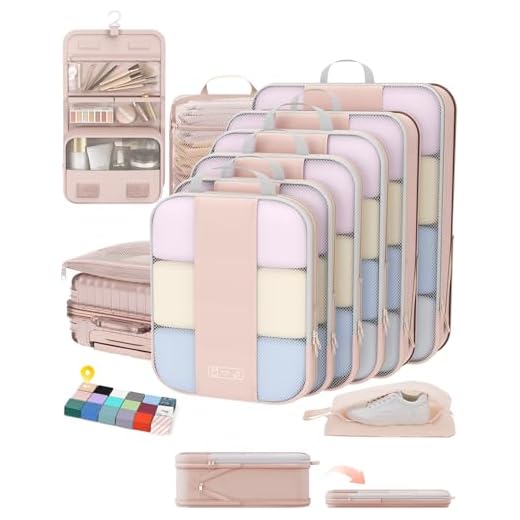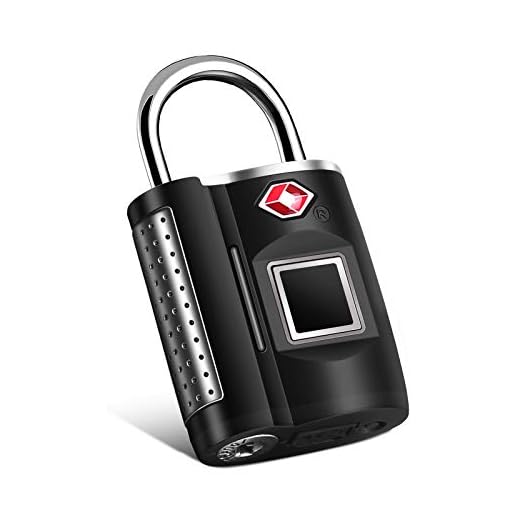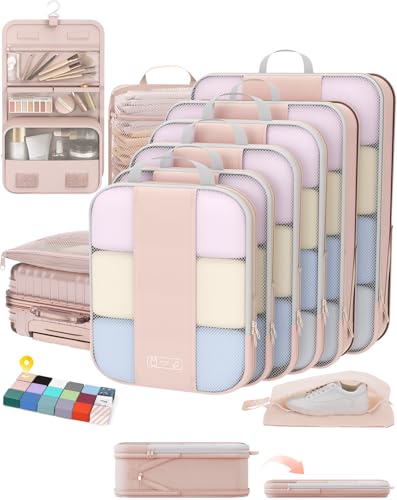

Use official left-bag counters located in Terminals 1, 2 and 3; Terminal 3 arrivals additionally provides coin-operated and staffed locker units. Typical tariffs run about PHP 50–200 per 24 hours for small items and PHP 200–450 per 24 hours for large suitcases, with exact prices varying by terminal and locker size.
At arrival or transfer, head to the information desk or the dedicated deposit counter near the arrivals hall. Present passport or local ID plus boarding pass, complete a short deposit form and keep the receipt stub. Counters usually accept cash and major cards; operations often follow flight schedules – counters in international terminals commonly operate before first arrivals and after last departures, but hours differ by terminal.
Security measures: deposits are recorded on a manifest, items are CCTV-monitored and sealed on request; avoid leaving valuables or original documents inside. Items unclaimed beyond the stated holding period may incur additional fees or be disposed according to facility policy – check the retention limit at drop-off. Allow at least 45–60 minutes to retrieve stored items before airline check-in deadlines.
Alternatives when official facilities are full: use hotel bell-desk holding, local courier/express shipping to a city address, or third-party left-bag services near the terminals. For fragile equipment purchase protective wrapping at the counter and photograph contents before deposit; keep the receipt and write contact details on tags to speed up recovery.
Left‑baggage options at NAIA (MNL)
Primary recommendation: hand over excess baggage to an official left‑baggage counter inside NAIA terminals or use verified off‑site drop‑off services; expect ID checks, a paper receipt with a tag number, and fees based on size and storage duration.
Locations and access
- Typical placement: arrivals hall near customs, arrivals transfer corridors or passenger service desks inside each terminal; signage usually reads “Left‑baggage” or “Baggage Counter”.
- Counter availability differs by terminal; peak processing points are terminal transfer areas and main concourses – confirm at the nearest information desk on arrival.
- Off‑site companies and some hotels operate short‑term pick‑up/drop‑off points within 10–20 minutes of NAIA; request a secure chain of custody before committing.
Fees, hours and limits
- Typical charges: PHP 150–400 per item per 24‑hour period; oversized items incur higher rates; short‑term hourly options sometimes available (approx. PHP 50–120 per hour).
- Operating times: many counters run roughly 06:00–23:00; a few terminals or third‑party providers offer 24/7 service – verify hours before arrival if retrieval will be during overnight hours.
- Size and weight: items over 30–35 kg or unboxed musical instruments may require special handling and advance notice.
Handling rules and practical tips:
- Present a government ID and keep the issued receipt/tag; reclaim is only with matching ID and receipt.
- Do not leave passports, original travel documents, cash, jewelry or irreplaceable items; counters typically refuse valuables.
- Photograph contents and external condition before handover; note the tag number and staff name for follow‑up.
- Confirm insurance/ liability limits on the receipt – many counters cap compensation for loss or damage.
- Allow 20–30 extra minutes for drop‑off or pick‑up during busy periods; counters may queue during early morning international arrivals.
Alternatives and last‑minute options:
- Hotel concierges frequently accept short holds for registered guests – useful for brief city exits between flights.
- Courier or warehouse-style short‑term holding services near NAIA offer daily, weekly and longer options; compare verified reviews and confirm pickup windows.
- For ground transport and vehicle tidying during a layover, a compact pressure washer can speed exterior cleaning: best car detail pressure washer.
Final note: verify counter locations and hours with the terminal information desk or airline staff on arrival to avoid unexpected closures or restricted access.
Where to find baggage storage counters at NAIA Terminals 1–4
Go directly to the Arrivals / Baggage Claim level of the relevant terminal; left-baggage counters are located next to carousels or immediately outside customs/arrival exits.
-
Terminal 1
- Location: Arrival hall – follow signs from the main baggage claim toward the public exit; counters typically set against the wall between carousel area and the taxi/ride-hailing zone.
- Service type: staffed counter handling suitcases and carry-ons; few or no self-service lockers.
- Expect: ID and claim stub at drop-off, tagging of items, payment at counter (cash usually accepted; card availability varies).
-
Terminal 2
- Location: Ground/Arrival level near the arrivals information desk and passenger exit to the curbside; look for “Left Baggage” or “Bag Deposit” signage.
- Service type: counter service adjacent to the arrivals lobby; often used by domestic and short-haul international travellers.
- Expect: shorter queues outside peak arrival waves; confirm operating hours at the information desk if late-night flights are involved.
-
Terminal 3
- Location: Arrival/Baggage Claim level – counters positioned close to the central passenger exits and ground transport entrances.
- Service type: larger facility options (counter plus limited lockers in some areas); suitable for medium-term holds.
- Expect: higher availability during daytime and 24-hour presence in terminals with continuous international operations, but confirm on-site.
-
Terminal 4 (Domestic)
- Location: Small arrivals hall; if a dedicated counter is absent, staff at the information desk or airline transfer desk will direct to the nearest facility (often outside Terminal 4 proper).
- Service type: limited or no dedicated lockers; alternative options include airline assistance or third-party city services.
- Expect: reduced hours and capacity compared with other terminals; verify before arrival when planning same-day movements.
Practical locating tips
- Follow overhead signage for “Baggage Claim,” then scan the perimeter of the arrival hall for counters marked “Left Baggage,” “Bag Deposit” or similar.
- If signs are unclear, approach the arrivals information desk or an airline transfer desk; ask staff for the exact counter number and current operating status.
- Keep the claim ticket and a photo ID on hand; inspect tags placed on items and photograph the tag number before leaving the terminal.
Operational notes and what to expect
- Payment: cash commonly required; some counters accept cards and mobile payments – confirm on arrival.
- Holding limits: daily rates and maximum storage periods vary by terminal and operator; request written receipt with collection deadline.
- Prohibited items: hazardous materials and perishables are typically refused; security screening may be performed at drop-off.
- If a terminal counter is closed, ask staff for the nearest alternative service or a secure short-term option outside the terminal complex.
Operating hours, phone numbers and how to check current availability
Contact MIAA switchboard or the terminal information desk before arrival; phone and online verification methods follow.
Primary contact: MIAA main line +63 2 8777 1100 (use this number to request terminal-specific extensions and official updates). For terminal-specific queries, use the terminal information desks listed on official NAIA pages or the Google Maps business entry for each terminal to get the latest direct phone number.
Typical opening windows: many international terminals maintain 24-hour arrival halls with baggage-holding services on the arrivals level; some domestic/third-party counters operate on business-hour schedules (commonly 07:00–22:00). Commercial third-party providers at or near NAIA often run fixed hours (07:00–21:00 or 08:00–20:00) – confirm exact times before planning.
Real-time availability checks: call the terminal information desk or the direct number shown on Google Maps; message the MIAA official social channels (Facebook Messenger or Instagram DMs) for a written confirmation; search the terminal’s business profile for “busy times” and recent customer photos/comments to estimate capacity. For pre-booked commercial options, use the provider’s booking page or app (Stasher, Bounce, Radical Storage and similar platforms show instant availability and allow reservations).
Practical verification steps: call at least 24 hours ahead during holidays or major events; for same-day needs, call 2–3 hours before arrival to confirm space and opening status. When on site, confirm availability at the arrivals information booth or airline transfer desk before leaving bags; request a receipt/tag number and written holding expiry time.
Ask these questions on first contact: exact opening hours, current occupancy, maximum storage duration, rates (per 24h or hourly), accepted payment methods, size/weight limits, restricted items policy, and claim procedures. If relying on a third-party provider, request their cancellation and refund policy in writing before booking.
Size, weight restrictions and pricing for lockers and counter storage
Prefer counter deposit for items that exceed locker dimensions or weight; lockers suit small backpacks, shopping bags and standard carry-ons.
Locker sizes and permitted weight
Typical locker categories (measure Height × Width × Depth): Small – ~40 × 30 × 25 cm, recommended max weight 8–10 kg; Medium – ~60 × 40 × 35 cm, recommended max 15–20 kg; Large – ~85 × 50 × 45 cm, recommended max 25–30 kg. Long or irregular items (tripods, golf clubs, some umbrellas) often won’t fit standard lockers; deposit counters accept bulky shapes and oversize lengths. Always measure items before drop-off and weigh them on a personal scale if available.
Prices, payment methods and practical handling
Typical pricing ranges (local currency): lockers – small ₱50–150 per 12 hours, medium ₱120–300 per 12–24 hours, large ₱250–500 per 24 hours; counter deposit – ₱200–600 per item per 24 hours depending on size and declared value. Extended-hold rates may apply after 3–7 days. Payments commonly accepted: cash, major cards and mobile QR wallets; counters may favor cash for small transactions. Expect extra fees for oversized or heavy items and for late collection beyond paid period.
Operational tips: obtain a printed receipt and tag, photograph contents and tag number, declare high-value items and ask about liability limits and insurance options, confirm maximum hold duration at drop-off. For guidance on compact ways to handle long, foldable items before drop-off see best way to store umbrellas in garages.
Drop-off procedure, ID requirements, claim tags and lost-ticket process
Present an original photo ID and the booking or boarding confirmation at the NAIA terminal storage counter; request a printed claim tag and the payment receipt, then photograph both before leaving the counter.
Accepted identity documents: passport (preferred for foreign nationals), Philippine passport, PhilID/UMID, driver’s licence, national government ID, and company-issued photo IDs; minors must have guardian ID matched to the name on the drop-off form.
Typical counter workflow: approach counter, complete the deposit form (full name as on ID, mobile number, item description), sign the terms & declaration, hand over the bag(s) for inspection, receive a numbered claim tag fixed to the item and a receipt with the operator stamp and payment details.
Claim-tag checklist: check that the numeric code on the tag matches the number printed on the receipt; verify operator name, terminal and counter number; take a clear photo of the tag attached to the item and a photo of the receipt; keep both digital copies in separate locations (phone gallery plus cloud or messaging to a safe contact).
Lost-ticket procedure: report immediately to the same counter and ask for the supervisor; present the original ID used at drop-off, any secondary ID, and proof of payment (card slip or bank app screenshot). Staff will search the logbook and CCTV footage and require completion of a lost-ticket declaration form. Release normally occurs only to the ID holder whose name appears on the deposit record.
Additional requirements that may apply: a small processing or retrieval fee (operator-dependent), a signed affidavit for loss claims, and a police report for high-value contents. Typical resolution times range from 30 minutes for a straightforward match to several hours if CCTV review or police involvement is needed.
Risk-reduction tips: register a local contact number on the deposit form, list distinctive features of the item on the form, avoid leaving irreplaceable valuables inside, and keep digital photos of item contents and claim documents to speed recovery when tickets are misplaced.
Security, liability limits and a list of prohibited or restricted items
Request a written receipt that lists item descriptions, serial numbers, declared value and staff name before leaving any bags or items; retain the claim tag and photograph contents and seals. For belongings valued above PHP 10,000 purchase separate transit insurance or obtain written, paid-up declared-value coverage from the service provider.
Most commercial counter and locker operators at NAIA apply limited liability and specific exclusions. Typical practice: standard coverage is modest (often only a few thousand PHP) unless additional declared-value insurance is purchased; loss/damage claims normally require presentation of the original claim tag, government ID and the service receipt. Confirm the operator’s exact monetary limit and whether CCTV and tamper-evident seals are used. File damage or theft reports within 72 hours of collection date; follow the operator’s claim form procedure and keep copies of all communications.
Storage operators follow Civil Aviation Authority of the Philippines (CAAP) rules and IATA Dangerous Goods Regulations for hazardous items. Items classified as dangerous goods are routinely refused. Operators also commonly exclude cash, negotiable instruments, precious metals, gemstones and original travel documents from liability – these should remain under personal control or covered by declared-value insurance.
| Item | Accepted? | Notes / Required actions |
|---|---|---|
| Firearms & ammunition | Prohibited / Restricted | Generally not accepted without official permits; most counters refuse firearms. If permitted, present authorization paperwork and request supervised handling. |
| Explosives, fireworks | Prohibited | Automatic refusal under DG regulations. Do not attempt to leave these items. |
| Compressed gas cylinders (scuba, LPG) | Prohibited / Restricted | Usually refused unless rendered non-pressurised and certified empty; confirm operator policy in advance. |
| Flammable liquids & aerosols (fuel, paint thinner, lighter refills) | Prohibited | Refused for safety. Even small quantities commonly not accepted. |
| Lithium batteries & power banks | Restricted | Follow IATA limits: ≤100 Wh normally acceptable in carry-on; 100–160 Wh require airline approval; >160 Wh generally prohibited. Many locker services refuse spare batteries and power banks–keep them with personal items or obtain operator approval. |
| Dry ice | Restricted | Some carriers allow up to approx. 2.5 kg for transport with packaging and ventilation; storage facilities may refuse due to sublimation hazards–check operator beforehand. |
| Corrosives, acids, toxins, pesticides | Prohibited | Refused under dangerous goods rules and local hazardous-materials laws. |
| Live animals | Prohibited | Not accepted by standard counters or lockers. Use approved animal-handling services or airline-arranged kennels. |
| Perishables, refrigerated medicines | Restricted | Accepted at operator discretion; lockers lack refrigeration. Prescription drugs accepted if accompanied by prescription and instructions; confirm refrigeration needs in advance. |
| Cash, securities, jewelry, original IDs & travel documents | Accepted but excluded from liability | Many operators explicitly exclude these from indemnity. Keep high-value items on person or buy declared-value coverage; photograph items and retain serial numbers. |
| Sharp objects (knives, tools) | Restricted | May be accepted if sheathed and packed safely; declare on drop-off and ask about liability for damage or loss. |
| Electronics (laptops, cameras) | Accepted | Operators often limit liability for electronics and fragile items; photograph, note serials, and consider insurance or declared-value protection. |
When in doubt, call the specific terminal counter and request written confirmation of acceptance policy, maximum liability amount, and any paperwork needed (permits, prescriptions, MSDS). Keep originals of receipts and claim tags until full collection and inspect items in the presence of staff before leaving the collection desk.
Practical alternatives: prebooked storage apps, nearby hotels and train/bus station options
Primary recommendation: Book a prearranged baggage-holding service through a reputable app for guaranteed space, online receipts and flexible pickup windows near NAIA terminals.
Prebooked apps – what to pick and what to expect: Major platforms to check: Bounce, Stasher, Radical Storage and LuggageHero; availability varies by city and terminal-adjacent neighborhoods, so confirm exact pickup point on the map before booking. Typical rates: roughly USD 4–10 per item per 24 hours (≈ PHP 220–550), with some providers offering hourly rates from USD 1–3 for short stays. Size limits commonly allow a standard checked bag (up to ~30–32 kg and 158 cm linear); oversize items incur extra charges or may be rejected. Look for listings that show: partner business name, opening hours, on-site contact number, photo of drop-off area, and a stated insurance limit – many partners include basic coverage but limits vary (check the policy on the booking page). Cancelation and refund windows usually close 6–24 hours before the booking time; save screenshots of confirmation and the QR/booking code for pickup.
Hotel bell-desk options – practical rules: Hotels in Pasay/Newport City adjacent to NAIA terminals commonly accept bag deposits. Registered guests: typically complimentary at concierge. Non-guest drop-offs: fees vary (approx PHP 150–500 per item per day) or a small handling charge; some hotels refuse non-guest holds for security reasons. Required items at drop-off: valid photo ID, guest name (if applicable) and a claim ticket–insist on a numbered receipt. For short transits (under 8 hours) request a stamped time and ask whether 24-hour pickup is possible. Tip guideline for bell staff: PHP 20–50 per item for friendly service when retrieving bags.
Train and bus station considerations: Most urban light-rail systems (LRT/MRT) do not offer left-baggage services. Major intercity terminals and integrated bus hubs may have manned counters or private lockers at selected locations; expected hours for those counters are usually daytime (about 06:00–22:00) and sizes are limited to suit carry-on or small checked items. Before relying on a station, call the terminal information desk or the bus operator to confirm: confirm hours, maximum hold duration, maximum bag size and payment method. If a station lacks a formal option, use an app partner or a nearby mall’s concierge/lockers instead.
Operational tips to reduce risk: 1) Prebook and choose partners with 24/7 support or local phone numbers; 2) Allow 15–30 minutes extra when planning drop-off/pickup to avoid missed flights or connections; 3) Photograph the claim tag and the compartment/receipt at drop-off; 4) Avoid depositing prohibited items – check the provider’s item restrictions before booking; 5) If holding for more than 24 hours, confirm daily rates and late pickup penalties in writing.







